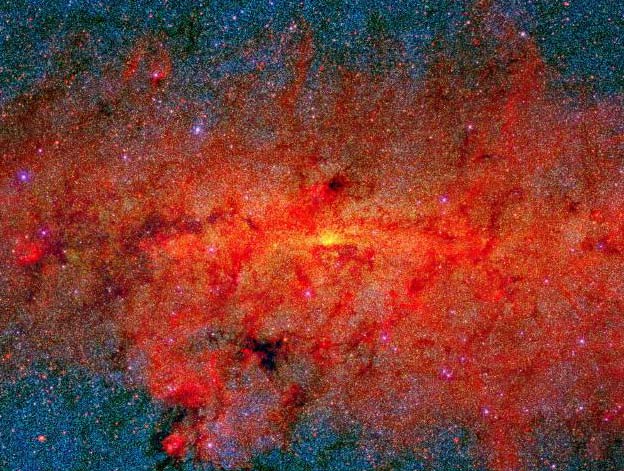
|
Explanation: The center of our Galaxy is obscured in visible light by dark dust that rotates with the stars in the Galactic Plane. In this century, however, sensors have been developed that can detect light more red that humans can see - light called infrared. The above picture shows what the Galactic Center looks like in three increasingly red bands of near-infrared light. The picture results from a digital combination of data recently taken by the 2MASS and MSX Galactic surveys. In near-infrared light (shown in blue) the dust is less opaque and many previously shrouded red giant stars become visible. In the mid-infrared (shown in red) the dust itself glows brightly, but allows us a view very close to our tumultuous and mysterious Galactic Center.
|
January February March April May June July August September October November December |
| ||||||||||||||||||||||||||||||||||||||||||||||||
NASA Web Site Statements, Warnings, and Disclaimers
NASA Official: Jay Norris. Specific rights apply.
A service of: LHEA at NASA / GSFC
& Michigan Tech. U.
Based on Astronomy Picture
Of the Day
Publications with keywords: Milky Way - Galactic Center - infrared
Publications with words: Milky Way - Galactic Center - infrared
See also:
- APOD: 2025 July 2 Á Milky Way Through Otago Spires
- APOD: 2025 May 20 Á Milky Way over Maunakea
- APOD: 2025 May 13 Á Gaia Reconstructs a Top View of our Galaxy
- APOD: 2025 May 12 Á Gaia Reconstructs a Side View of our Galaxy
- APOD: 2025 April 14 Á The Galactic Center in Radio from MeerKAT
- Galaxies in Space
- APOD: 2025 February 23 Á Saturn in Infrared from Cassini
